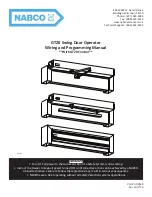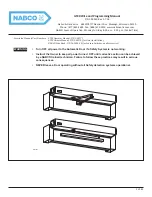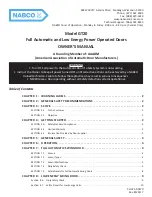
8
INSTRUCTION MANUAL FOR ARC WELDING MACHINES
IMPORTANT: READ THIS MANUAL AND THE “SAFETY
RULES” MANUAL CAREFULLY BEFORE INSTALLING,
USING, OR SERVICING THE WELDING MACHINE,
PAYING SPECIAL ATTENTION TO SAFETY RULES.
CONTACT YOUR DISTRIBUTOR IF YOU DO NOT FULLY
UNDERSTAND THESE INSTRUCTIONS.
1 PRECAUTIONS
This machine must be used for welding only. It must not be
used to defrost pipes.
It is also essential to pay special attention to the "SAFETY
RULES" Manual. The symbols next to certain paragraphs
indicate points requiring extra attention, practical advice or
simple information.
This MANUAL and the "SAFETY RULES" MANUAL must be
stored carefully in a place familiar to everyone involved in
using the machine. They must be consulted whenever doubts
arise and be kept for the entire lifespan of the machine; they
will also be used for ordering replacement parts.
2 GENERAL DESCRIPTIONS
2.1 SPECIFICATIONS
This welding machine is a constant current power source
built using INVERTER technology, designed to weld covered
electrodes (not including cellulosic) and for TIG procedures,
with contact starting and high frequency.
2.2 EXPLANATION OF THE TECHNICAL
SPECIFICATIONS LISTED ON THE MACHINE PLATE.
N°.
Serial number, which must be indicated on any
type of request regarding the welding machine.
Tri-phase static transformer-rectifier frequency
converter.
Drooping-characteristic.
MMA
Suitable for welding with covered electrodes.
TIG
Suitable for TIG welding.
U0.
Secondary open-circuit voltage
X.
Duty cycle percentage. % of 10 minutes during
which the welding machine may run at a certain
current without overheating.
I2. Welding
current
U2.
Secondary voltage with current I2
U1.
Rated supply voltage
3- 50/60Hz 50- or 60-Hz tri-phase power supply
I1 max. This is the maximum value of the absorbed
current.
I1 eff.
This is the maximum value of the actual current
absorbed,
considering the duty cycle.
IP23C Protection grade of the housing, approving the
equipment
as
suitable for use outdoors.
C:
The additional letter C means that the equipment
is protected against access to the live parts of the
power circuit by a tool (diameter 2,5 mm).
Suitable for hazardous environments.
NOTES: the welding machine has also been designed for
use in environments with a pollution rating of 3. (See IEC
664).
2.3 DESCRIPTION OF PROTECTIVE DEVICES
2.3.1. Thermal
protection
This machine is protected by a temperature probe, which
prevents the machine from operating if the allowable
temperatures are exceeded. Under these conditions the fan
keeps running and the LED
R
lights.
2.3.2. Block
protections
This welding machine is equipped with various safety
devices that stop the machine before it can suffer damage.
The welding machine may operate within the following
voltage ranges:
For rated voltage 208/220/230V, from 175 to 270V
For rated voltage 400/440V, from 340 to 490V
Caution: if the supply voltage does not fall between the
above values, no LED will light and the fan is powered.
If the phases are not properly connected, 3 light points will
appear (steadily lit) on the display
S
when the machine is
started.
If, with the machine on, the voltage falls below 175 V (U1 =
230V) or 340 V (U1 = 400V), the display
S
will show the
abbreviation E3.
If, with the machine on, the voltage rises above 275 V (U1 =
230V) or 490 V (U1 = 400V), the display
S
shows the
abbreviation E4.
In this case turn off the machine, restore the proper voltage
and restart. If the problem has been corrected, the welding
machine will begin operating again.
If, with the machine on, the display
S
shows the message
E2 or E1, check the supply voltage of the machine; if it is
correct, the machine requires technical service.
If a low water level is detected for the cooling unit the
abbreviation H2O flashes on the display
S
.
3. INSTALLATION
Make sure that the supply voltage matches the voltage
indicated on the specification plate of the welding machine.
The capacity of the overload cut-out switch or fuses installed
in series with the power supply must be equivalent to the
absorbed current I1 of the machine.
WARNING! Extension cords of up to 30m must have a
cross-section of at least 2.5 mm2.
3.1 START-UP
Only skilled personnel should install the machine. All
connections must be carried out according to current
regulations, and in full observance of safety laws (regulation
CEI 26-10 -CENELEC HD 427).








































